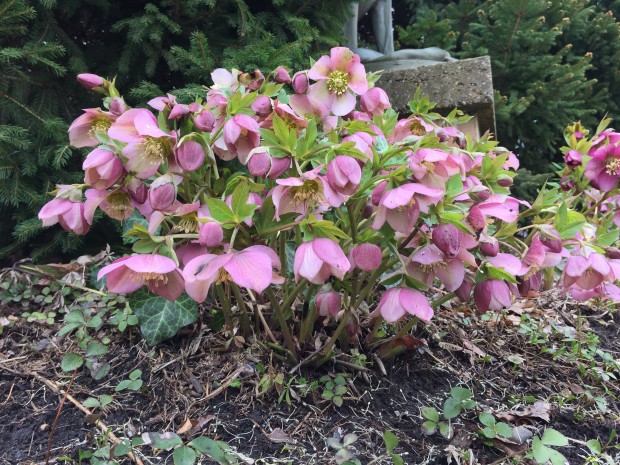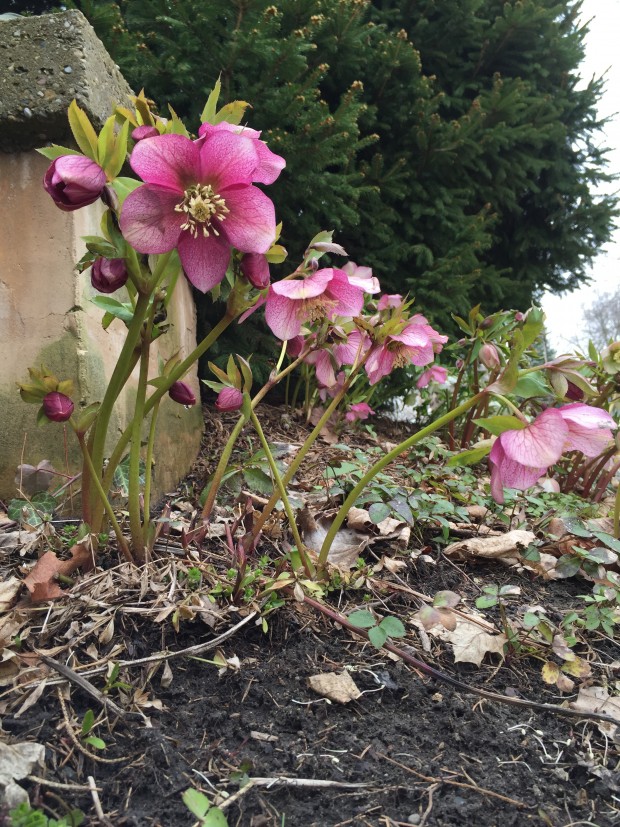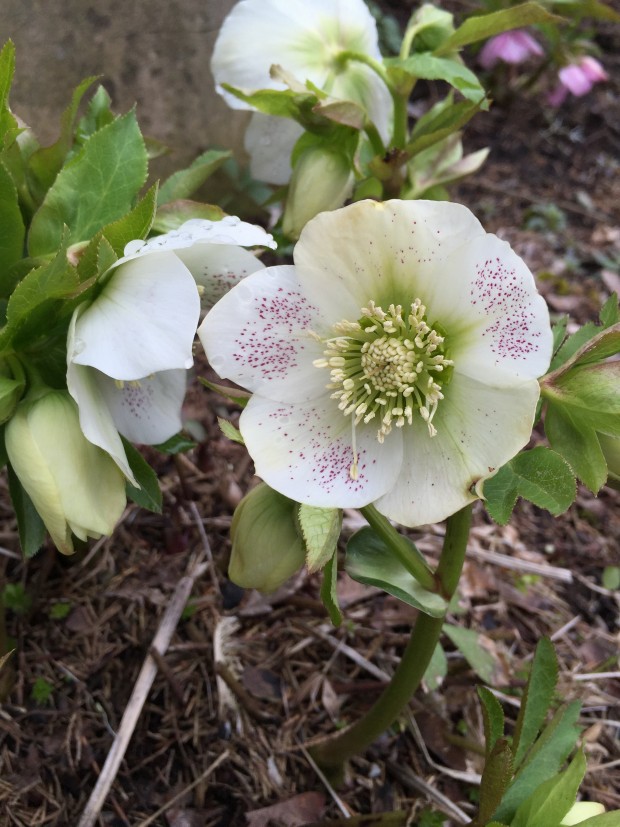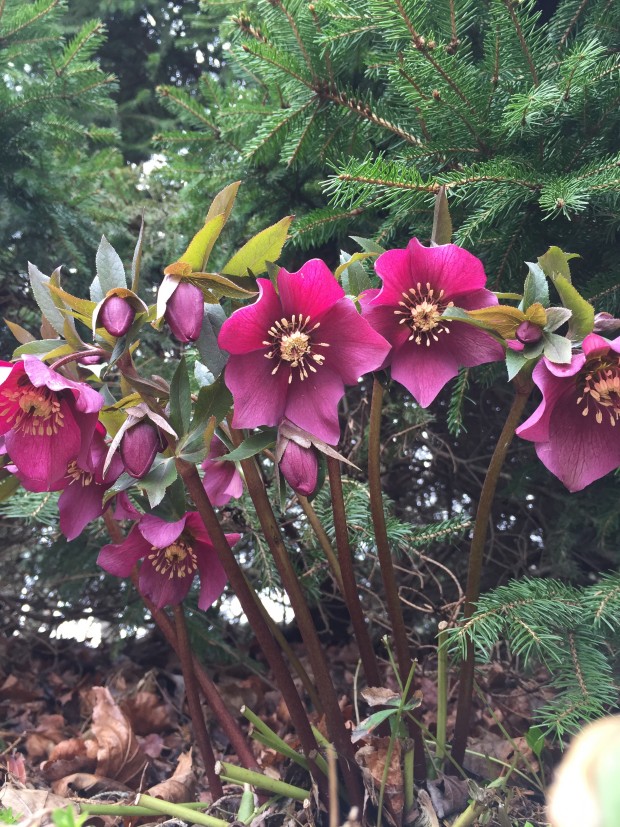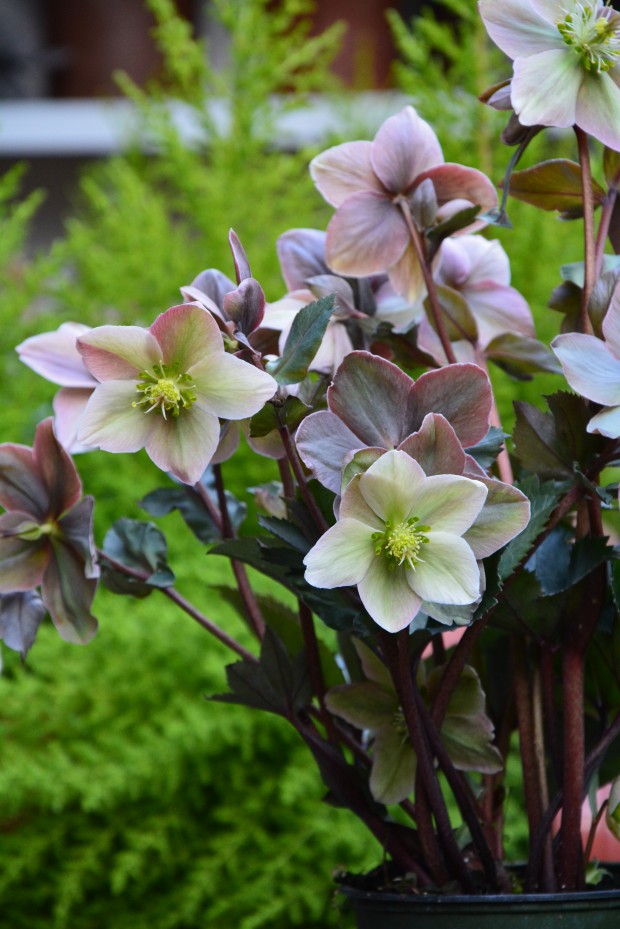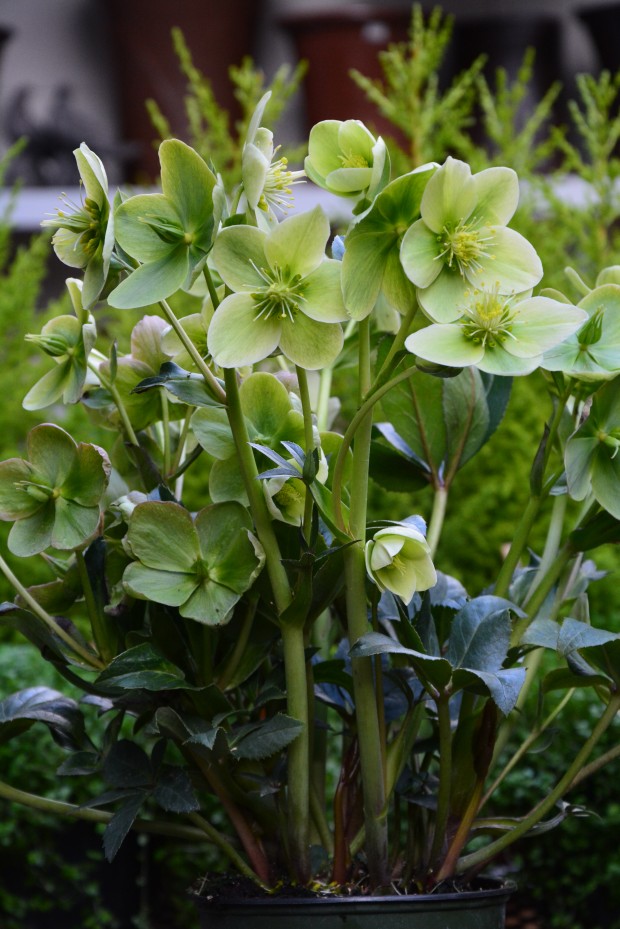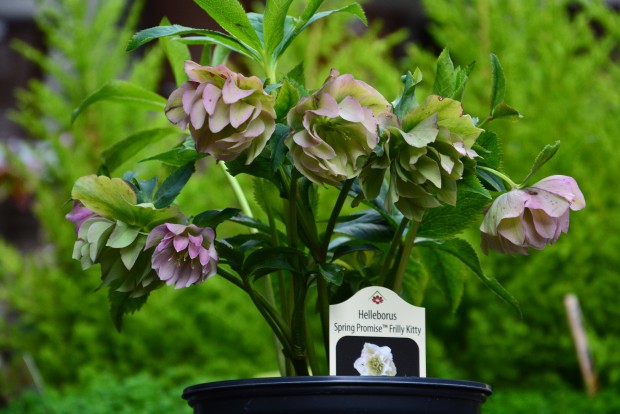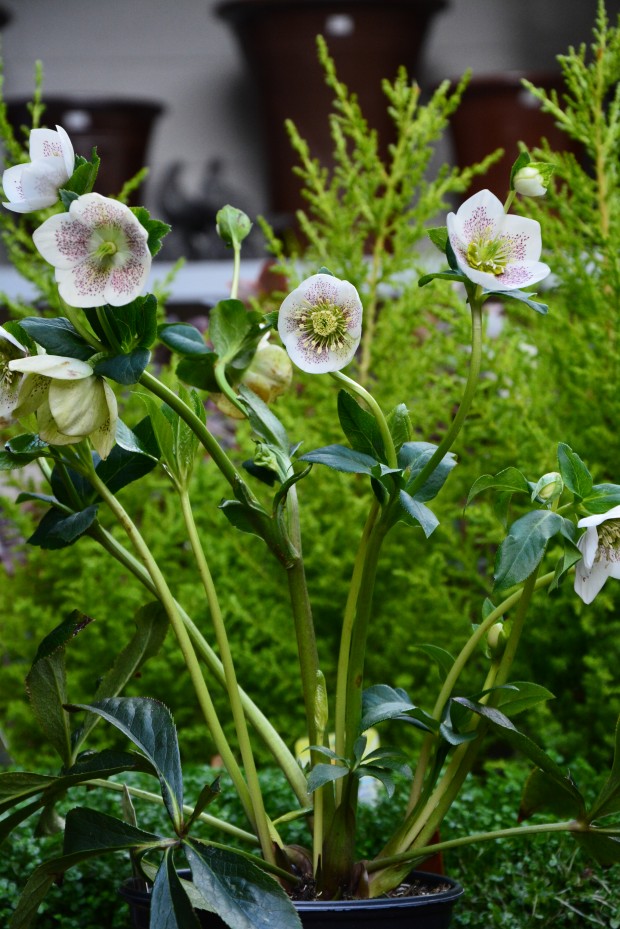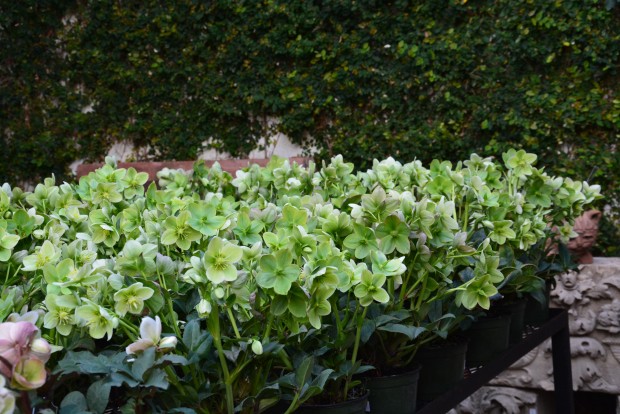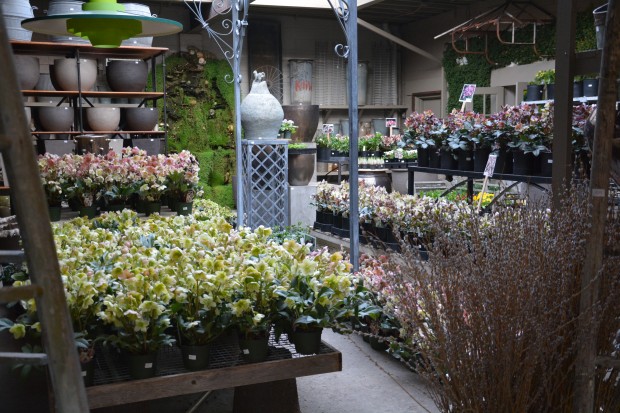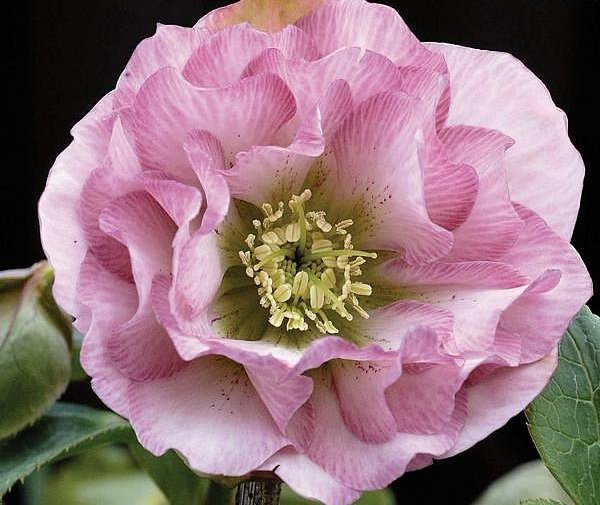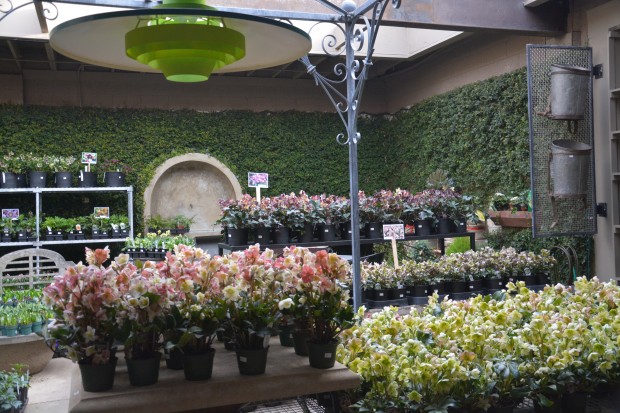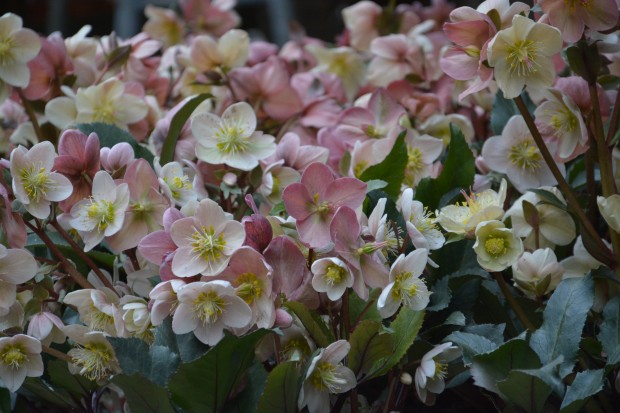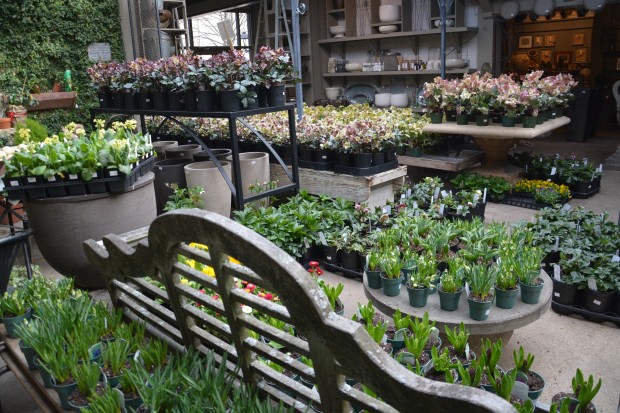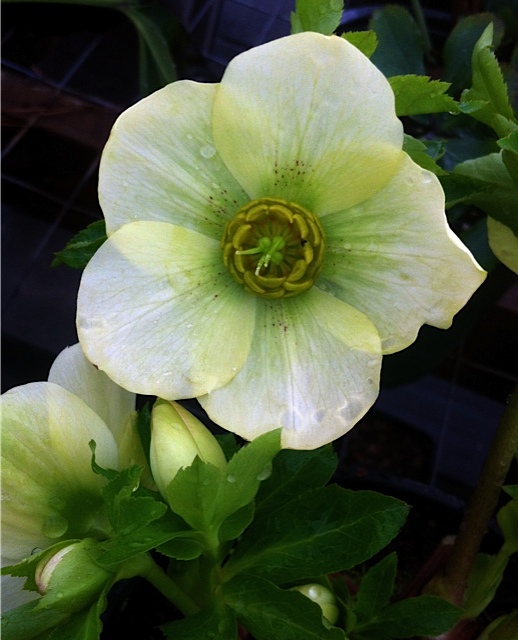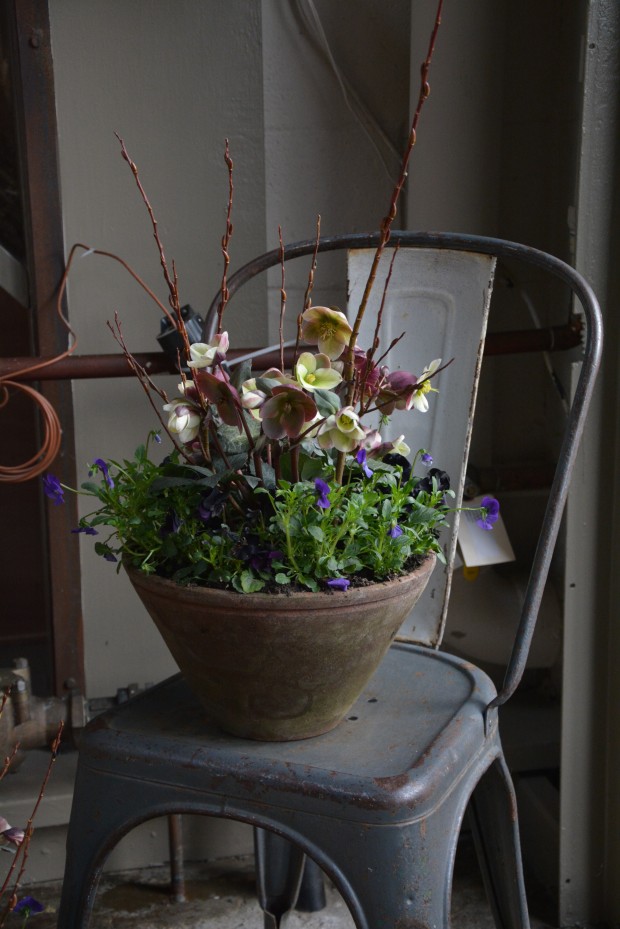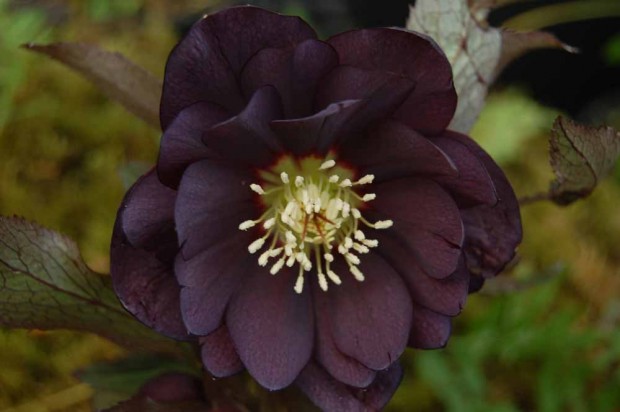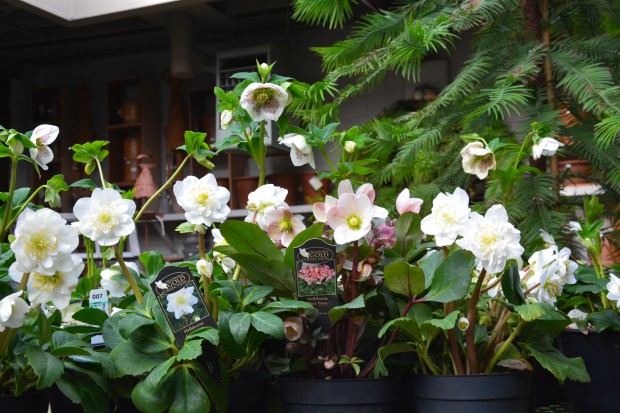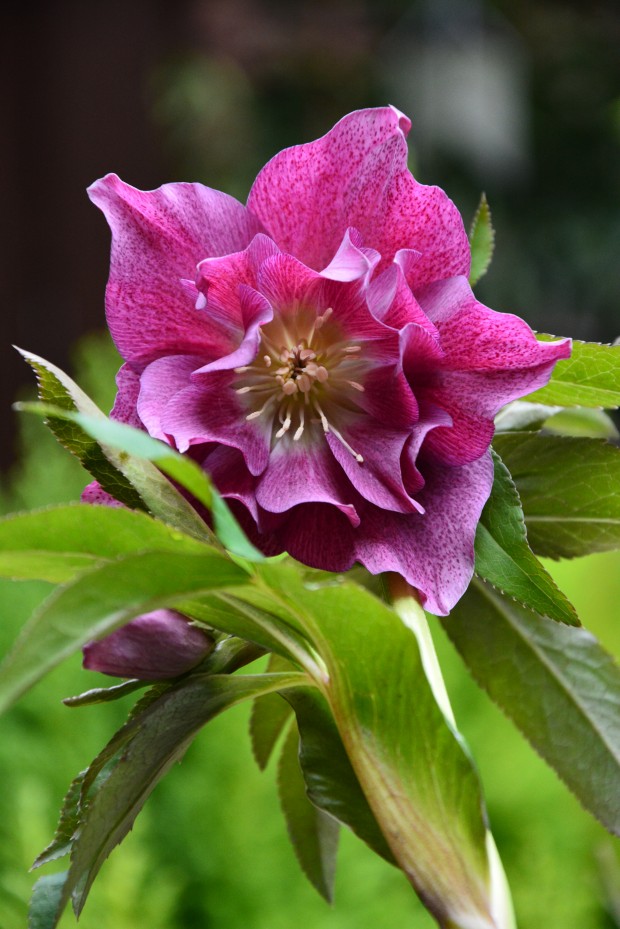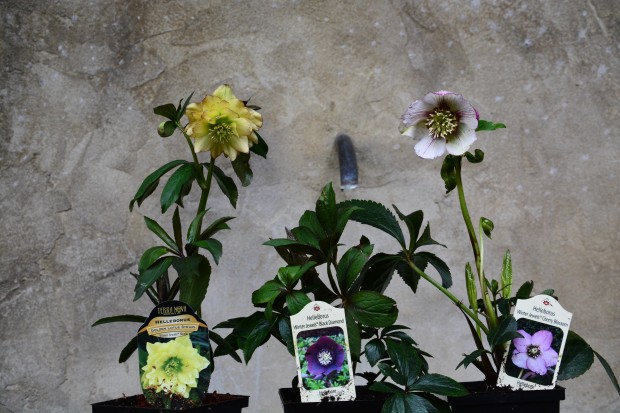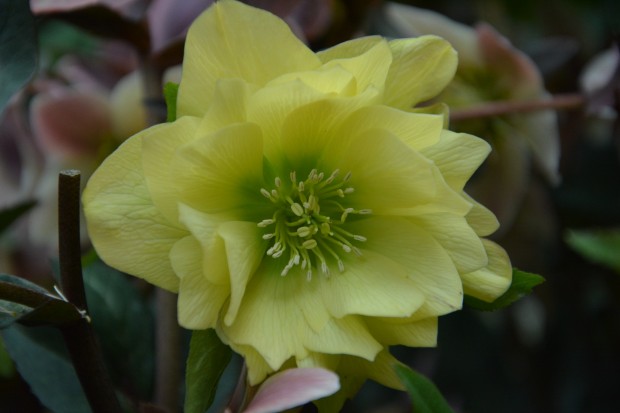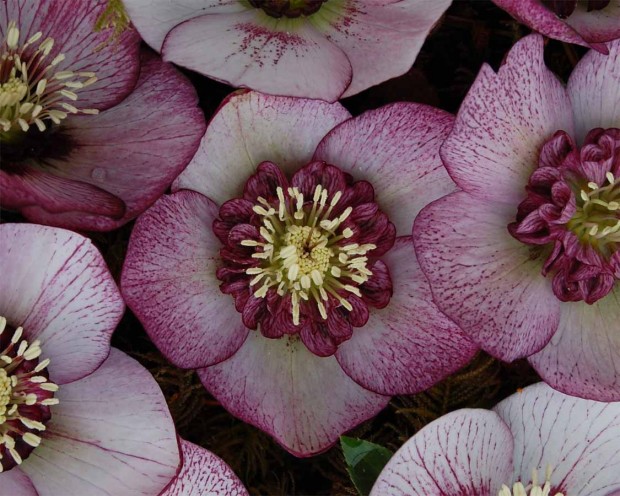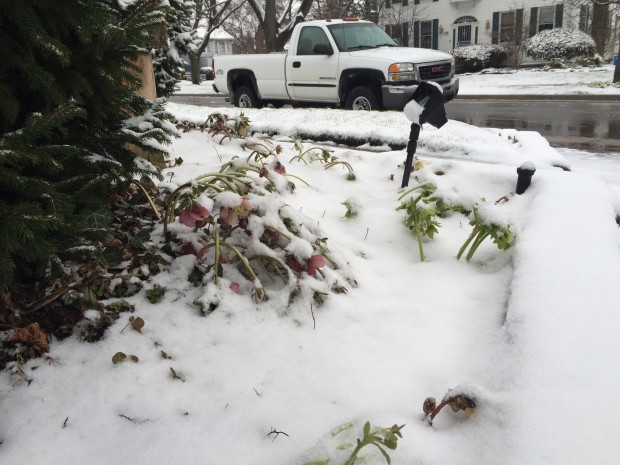 Would that every plant in my garden could be hellebore hardy. Hellebore hardy? Hellebore hardy is that state of plant being which is as tough as nails, bud and bloom hardy, every day in hostile weather, as in every crappy spring wild card day hardy. We have had crazy cold and blustery weather the first 12 days of April. As in daytime highs of 28 degrees, and some night time lows at 19 degrees. If it were January, or February, or even the first part of March, these temperatures would not bother anything in my garden. At that time, every plant is dormant, and oblivious to the day to day changes in temperature. This kind of cold in the spring can damage emerging flowers and leaves. Our espaliered fruit trees are very close to blooming. I am hoping they hold off for a week, as below freezing temperatures can easily damage or wipe out those flowers. The flowering stalks of my hellebores emerged from the ground a month ago. The have been growing steadily, in spite of a lengthy bout of really cold and windy weather.
Would that every plant in my garden could be hellebore hardy. Hellebore hardy? Hellebore hardy is that state of plant being which is as tough as nails, bud and bloom hardy, every day in hostile weather, as in every crappy spring wild card day hardy. We have had crazy cold and blustery weather the first 12 days of April. As in daytime highs of 28 degrees, and some night time lows at 19 degrees. If it were January, or February, or even the first part of March, these temperatures would not bother anything in my garden. At that time, every plant is dormant, and oblivious to the day to day changes in temperature. This kind of cold in the spring can damage emerging flowers and leaves. Our espaliered fruit trees are very close to blooming. I am hoping they hold off for a week, as below freezing temperatures can easily damage or wipe out those flowers. The flowering stalks of my hellebores emerged from the ground a month ago. The have been growing steadily, in spite of a lengthy bout of really cold and windy weather.
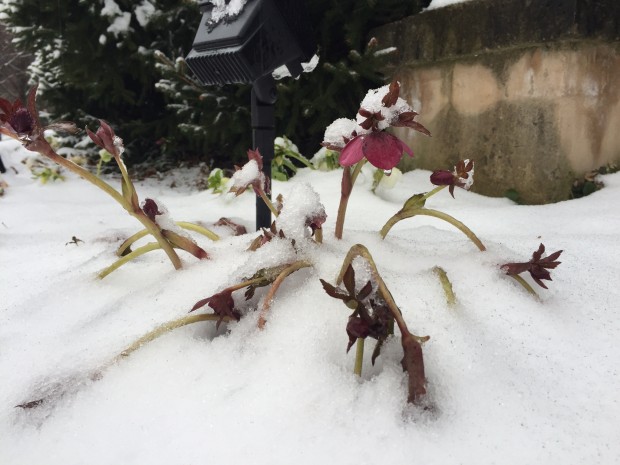 The flowering stalks of the hellebores usually come out of the ground in my zone in mid March. They are programmed to come out of the ground, fighting. How they fight to bloom enchants me. March and April are politely known as transitional months in Michigan. As in 2.5 parts winter dueling fiercely with .5 parts of spring. Hellebores bloom in spite of that conflict- I admire that cheekiness about them. Their ability to withstand cold, snow, ice, freezing rain and wind when they have broken dormancy and begun to grow is remarkable. All the more extraordinary is their ability to shrug off this hostile weather while in full bloom. This picture was taken at the end of the day on April 10. I was worried that every flower would be at least damaged, if not obliterated by morning.
The flowering stalks of the hellebores usually come out of the ground in my zone in mid March. They are programmed to come out of the ground, fighting. How they fight to bloom enchants me. March and April are politely known as transitional months in Michigan. As in 2.5 parts winter dueling fiercely with .5 parts of spring. Hellebores bloom in spite of that conflict- I admire that cheekiness about them. Their ability to withstand cold, snow, ice, freezing rain and wind when they have broken dormancy and begun to grow is remarkable. All the more extraordinary is their ability to shrug off this hostile weather while in full bloom. This picture was taken at the end of the day on April 10. I was worried that every flower would be at least damaged, if not obliterated by morning.
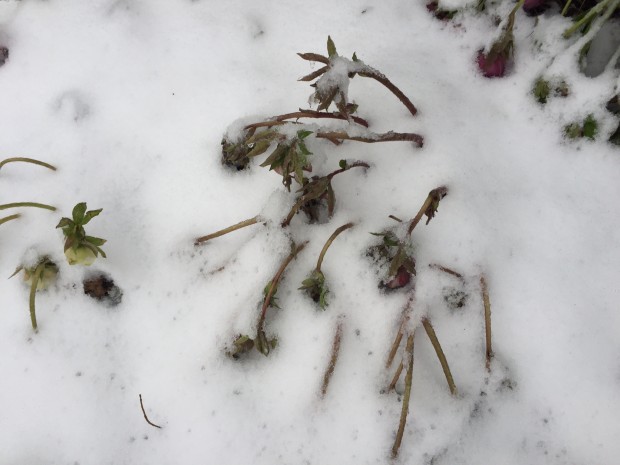 It was not an idle worry. My white flowered magnolia stellata is full of white flowers gone to brown mush. The early flowering magnolias are not hellebore hardy. Their flowering can be laid low and obliterated by cold April weather. I don’t love them less for this. I just know that a tumultuous spring has its disappointments, and its survivors. My stellata blooms well 2 out of 5 years.
It was not an idle worry. My white flowered magnolia stellata is full of white flowers gone to brown mush. The early flowering magnolias are not hellebore hardy. Their flowering can be laid low and obliterated by cold April weather. I don’t love them less for this. I just know that a tumultuous spring has its disappointments, and its survivors. My stellata blooms well 2 out of 5 years.
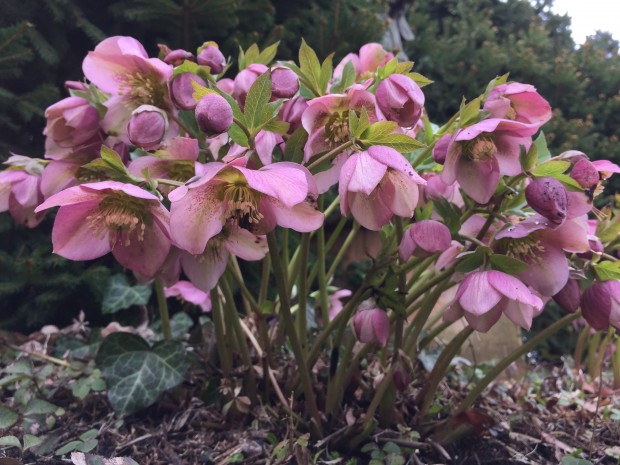 The hellebores are survivors. They do not need any help from me if the beginning of spring is deadly cold. They never ask for much of anything, actually. As for April 11, my hellebores revived. Once the snow and ice melted, and the air temperatures warmed up, my hellebores got back to the business of blooming. My old clumps are sensational this year.
The hellebores are survivors. They do not need any help from me if the beginning of spring is deadly cold. They never ask for much of anything, actually. As for April 11, my hellebores revived. Once the snow and ice melted, and the air temperatures warmed up, my hellebores got back to the business of blooming. My old clumps are sensational this year.
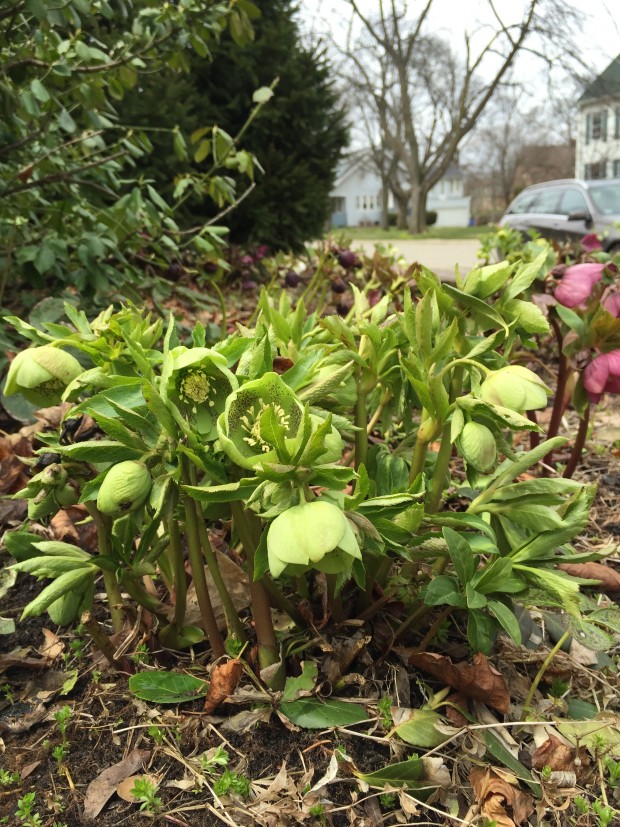 This big clump, one of many of the old Royal Heritage strain that I grow, is unfazed by inclement weather.
This big clump, one of many of the old Royal Heritage strain that I grow, is unfazed by inclement weather.
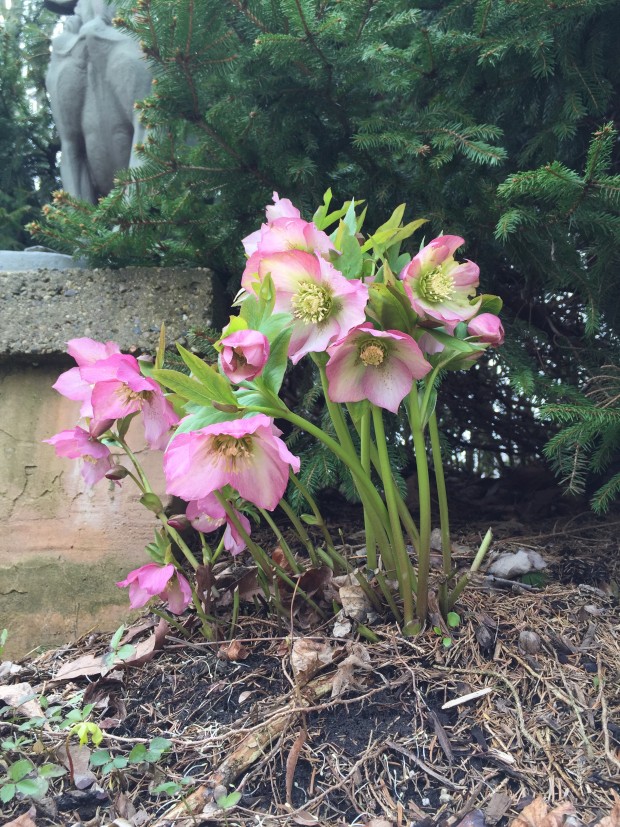 It is hard to believe that these flowers survived night temperatures ranging from 19 to 27 degrees, over a period of almost 2 weeks.
It is hard to believe that these flowers survived night temperatures ranging from 19 to 27 degrees, over a period of almost 2 weeks.
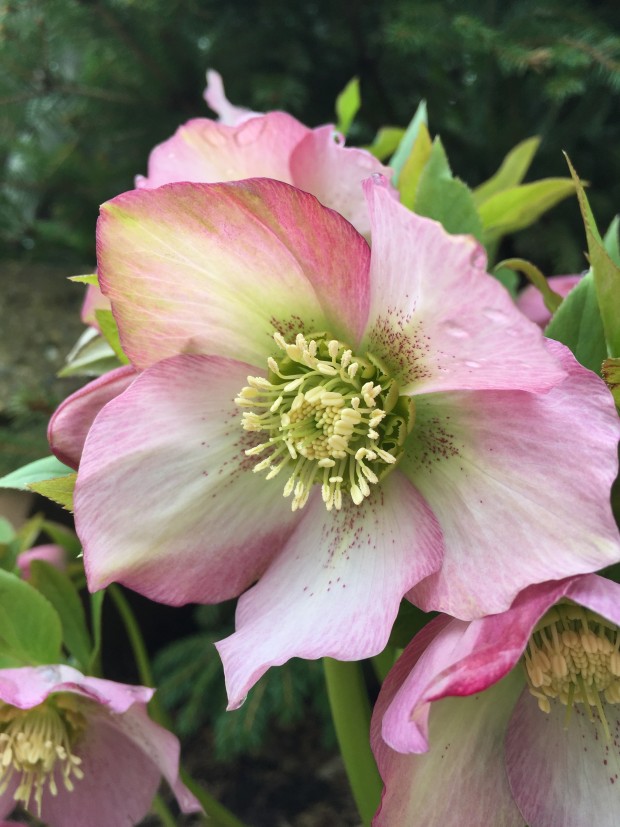 Hellebore flowers are big and showy. What is just as showy is how they handle the late winter weather. Showier still is that these plants are still growing strong, despite their age. Most of my original group was planted well over a decade ago. I do not often see the Royal Heritage strain offered for sale – pity that.
Hellebore flowers are big and showy. What is just as showy is how they handle the late winter weather. Showier still is that these plants are still growing strong, despite their age. Most of my original group was planted well over a decade ago. I do not often see the Royal Heritage strain offered for sale – pity that.
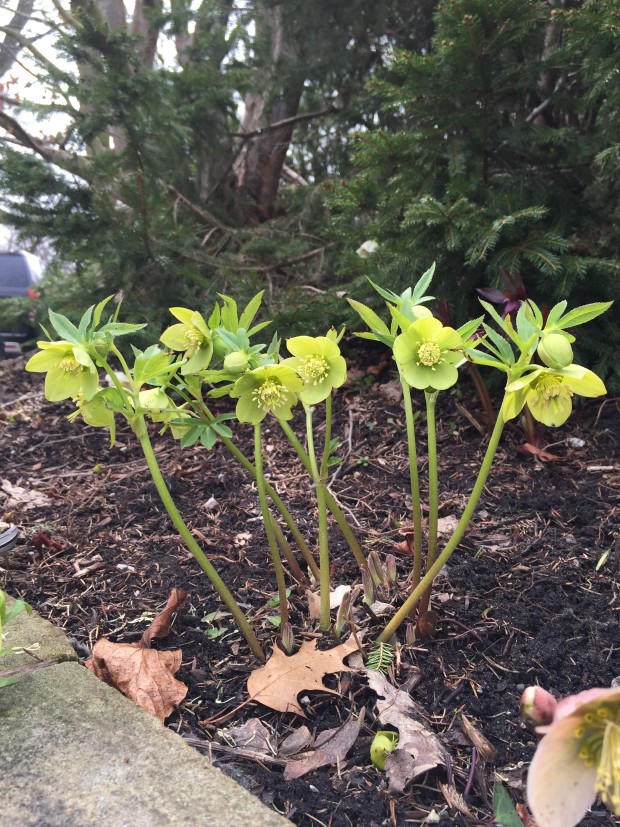 To follow are some pictures of my hellebores – both old and new. I appreciate every one of them, especially given that most of the rest of the garden is still biding its time, hoping for a clearer sign that spring is here.
To follow are some pictures of my hellebores – both old and new. I appreciate every one of them, especially given that most of the rest of the garden is still biding its time, hoping for a clearer sign that spring is here.
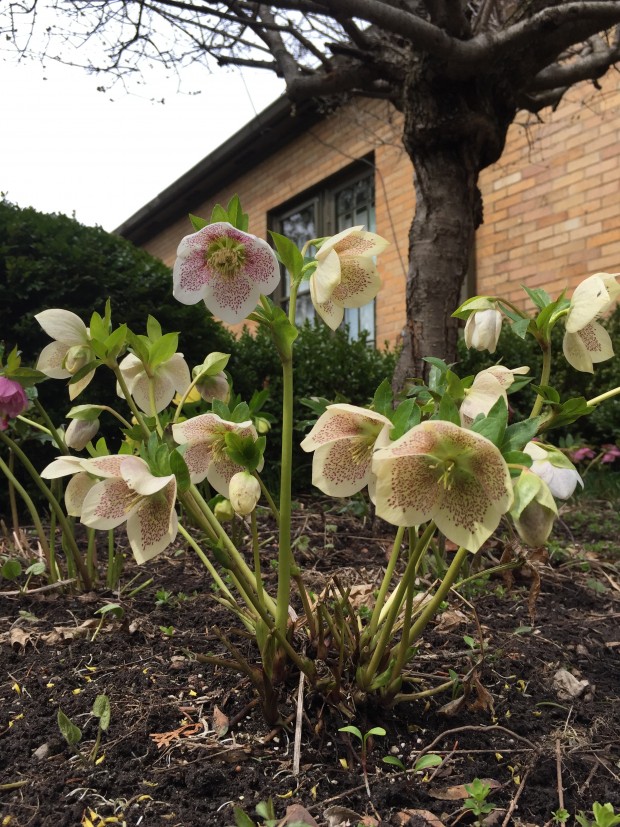 Conny is a newer variety. This is its 3rd spring.
Conny is a newer variety. This is its 3rd spring.
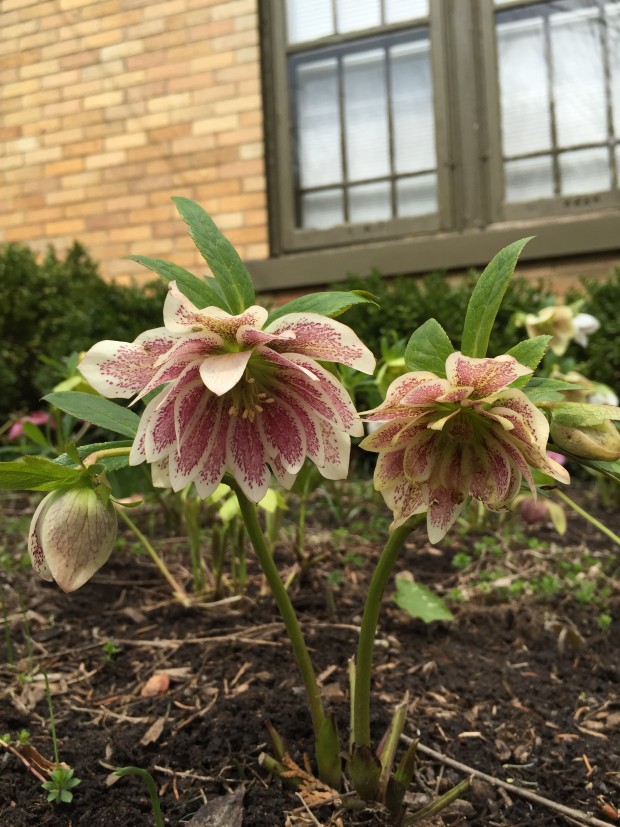 This spotted double is a newer variety whose name I cannot remember. Lovely, and sparse.
This spotted double is a newer variety whose name I cannot remember. Lovely, and sparse.
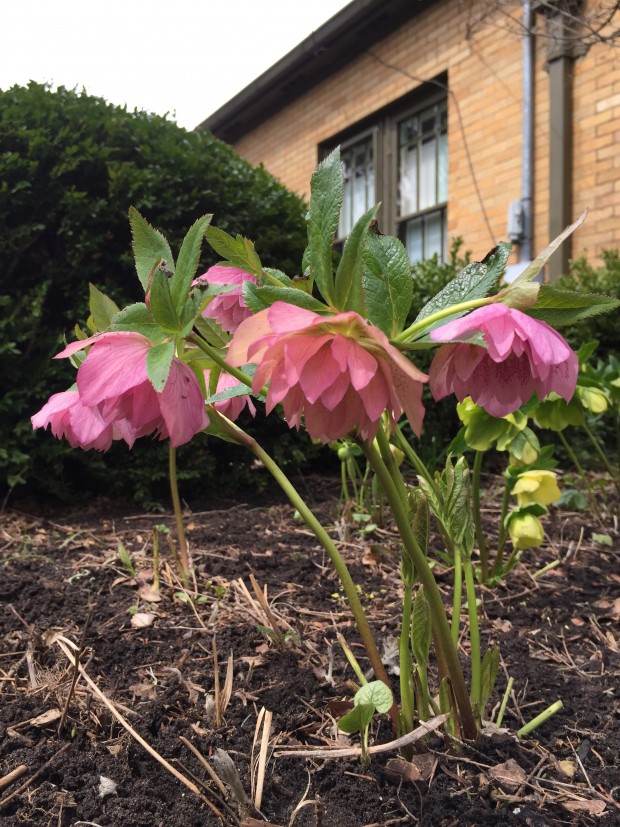 My newest group of more recently bred hellebore hybrids are gawky and thin. I am hoping to see them put on some weight this year. It is too soon to determine whether they will form big and persistent clumps. The Royal Heritage Mix may not have the interesting shapes and the clearer colors as the newest varieties that are available, but they are reliable. Should you have an interest in this discussion regarding hellebores persistence, I would invite you to read an essay from the well known English gardener and garden writer, Noel Kingbury. His column is a regular read for me. He worries that the new cultivars are not as vigorous as the old fashioned varieties. His life is a world away from mine, but his commentary on the garden is of interest to me. http://noels-garden.blogspot.com/2016/02/hellebore-troubles.html
My newest group of more recently bred hellebore hybrids are gawky and thin. I am hoping to see them put on some weight this year. It is too soon to determine whether they will form big and persistent clumps. The Royal Heritage Mix may not have the interesting shapes and the clearer colors as the newest varieties that are available, but they are reliable. Should you have an interest in this discussion regarding hellebores persistence, I would invite you to read an essay from the well known English gardener and garden writer, Noel Kingbury. His column is a regular read for me. He worries that the new cultivars are not as vigorous as the old fashioned varieties. His life is a world away from mine, but his commentary on the garden is of interest to me. http://noels-garden.blogspot.com/2016/02/hellebore-troubles.html
